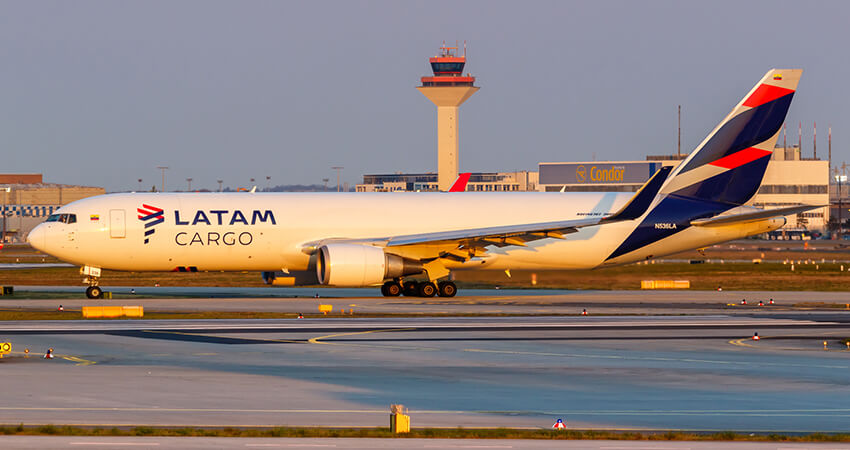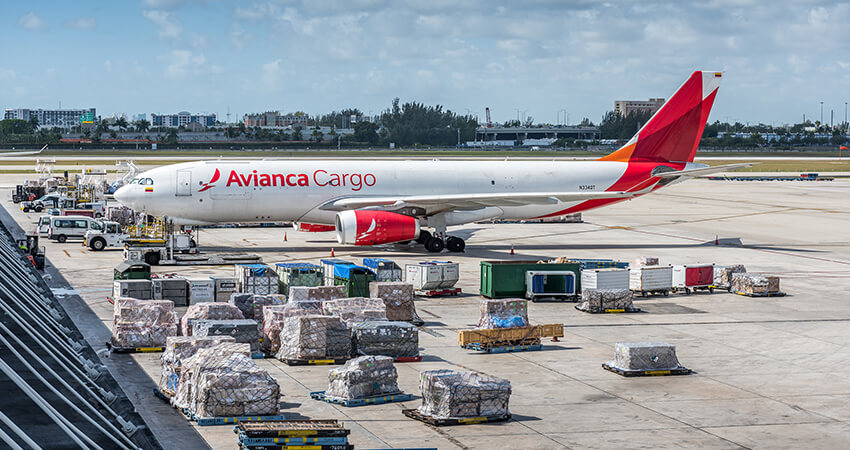Latin America is a key region in the global trade scenario. As a supplier of raw materials and industrial products, it has powerful trade relations with the whole world, making it worthwhile to know what the main cargo hubs in Latin America are. Historically, the United States and Europe have been its main customers, although in the 21st century, Asia and the Pacific have also become very attractive markets.
Latin America is a huge subcontinent, so the transportation of goods can take a long time. The distances to Europe, Asia, and even the United States make it necessary for many products to be transported by air. Therefore, cargo airports play a fundamental role in facilitating an efficient flow of goods.
According to the latest report from the Airports Council International for Latin America and the Caribbean (ACI-LAC), the region is far from the volumes of Chines or European airports , but Latin American terminals are still key not only for the region but also for the supply of key goods to many global markets.
El Dorado International Airport (BOG) – Bogotá, Colombia

Colombia’s main airport is the most important cargo hub in Latin America. Its main exports are flowers, household appliances, fruits, and textiles, according to the Colombian government. Its strategic location makes it a key point for the distribution of goods in the Andean region. Additionally, Colombia’s geography makes cargo flights sensible for exporting products that could otherwise quickly perish.
With modern facilities and efficient logistical services, El Dorado transported over 700,000 tons in 2022 (the last year with available figures). Therefore, it plays an essential role in the supply chain of the markets it serves. Private and public investments have also transformed this airport into one of the most modern in the region.
Benito Juárez International Airport (MEX) – Mexico City, Mexico
Mexico City, the second-largest city in Latin America, also has the second most important cargo airport in the region. With extensive infrastructure and global connections, just a step away from the United States and with good connections to the Pacific and the Atlantic, this airport is a bridge between Latin America and the rest of the world. Over 500,000 tons passed through it in 2022.
Comodoro Arturo Merino Benítez International Airport (SCL) – Santiago, Chile
Santiago de Chile has a modern airport and a major airport company, LATAM, which makes this airport a key player in cargo transportation throughout the region. With over 450,000 tons transported, the goal of becoming a regional logistics center seems accurate, leaving the Chilean terminal very close to the Mexican one, despite being very different countries in size.
São Paulo/Guarulhos International Airport (GRU) – São Paulo, Brazil
São Paulo is the largest city in Latin America, and its main airport is key on the map of the main logistics centers in Latin America. With first-rate infrastructure and a strategic location in the economic heart of Brazil, it plays a crucial role in international trade, connecting Latin America with global destinations, transporting over 400,000 tons in 2022.
Viracopos International Airport (VCP) – Campinas, Brazil

If we add the 350,000 tons of this airport, we would more easily see the power of the largest Latin American economy. Thus, São Paulo, between its two airports, surpasses Bogotá and any other airport in the region.
Mariscal Sucre International Airport (UIO) – Quito, Ecuador
Quito, the capital of Ecuador, is home to an airport that is key for the path of roses and other flowers worldwide [https://evergreenaviation.com/blog/the-rose-road-the-air-logistics-around-flowers/]. Its strategic location and efficient logistical services make it a key node for air cargo in Ecuador, focusing on fruits and the aforementioned flowers. This explains why it is the first one, despite not being among the top ten in passenger flow, to sneak into the most important ones in cargo, with nearly 300,000 tons in 2022.
Luis Muñoz Marín International Airport (SJU) – San Juan, Puerto Rico
The Caribbean is present with another terminal that is not among the main passenger airports. However, with strong communication with the United States, this airport transports over 240,000 tons every year, a very important figure for a small country.
Jorge Chávez International Airport (LIM) – Lima, Peru
The capacity of Peru’s main airport to handle diverse cargo, resulting from a country with very different geographies and productions, makes it an interesting center to understand the challenges of logistics, also handling nearly 220,000 tons per year. It shares with Bogotá a privileged position facing the Pacific, although it is not as in the middle of the subcontinent as the Colombian capital.
Guadalajara International Airport (GDL) – Guadalajara, Mexico
Mexico includes another airport in the list, with a strong imprint linked to regional products. Again, its proximity to the Pacific allows it to have good connections and load 176,000 tons per year. On the one hand, with Asia, but also with the lucrative market of the US West Coast.
Ministro Pistarini International Airport (EZE) – Buenos Aires, Argentina
Almost on par with Guadalajara, with 174,000 tons, Argentina’s main airport concentrates a large number of logistical operations. However, the extensive territory of the South American country and its various regional economies lower the importance of this terminal. The country’s air cargo would grow if we add Tucumán (which exports lemons or blueberries) and Mendoza (which sends fine wine abroad).










